The Story Behind the Lincoln Statue on Millikin's Campus
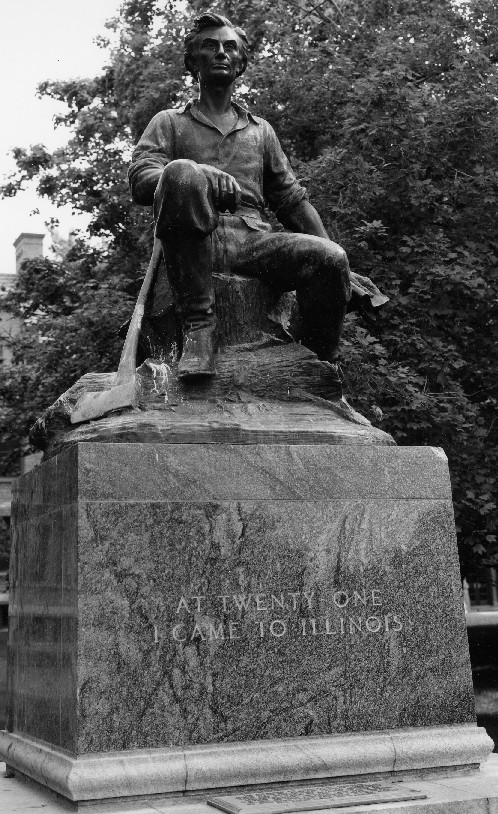
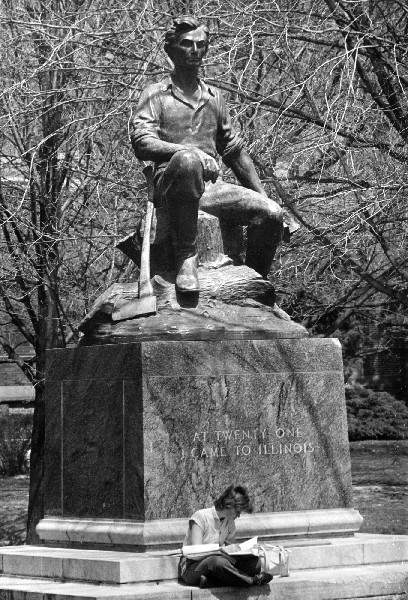
"At 21, I came to Illinois.”
118 years later, he came to Millikin and has been a campus icon for the past 60 years.
On October 24, 1948, a statue of Abraham Lincoln was dedicated on the campus of Millikin University. This is the story of how that statue came into being and how it came to reside in Decatur at Millikin University.
Lincoln and Decatur
In the spring of 1830, not long after his twenty-first birthday, Abraham Lincoln joined his father as part of a thirteen-person caravan that spent two weeks traveling from Spencer County, Indiana to the newly created Macon County in Illinois. He helped his father build a cabin no more than eight miles from where the Millikin campus is today. He left the Decatur area a year later, but had already given his first known political speech at the site of what is today Lincoln Square in downtown Decatur. He would return to Decatur several times, including to accept the endorsement for President at the state Republican convention in May of 1860, where he was given the nickname "Rail Splitter," and would go on to Chicago to become his party's national candidate in the 1860 Presidential election. His last known visit to Decatur came in February 1861 when his train stopped in Decatur en route to Washington D.C. and his inaugaration. The stop lasted only a few minutes but Lincoln did have time to disembark and greet a large crowd of well-wishers, stopping to shake hands with some of the more important Decatur supporters of his campaign, including James Millikin, who would eventually found Millikin University in Decatur.
A Statue for Decatur
The driving force behind procuring a monument to Lincoln for Macon County was Decatur Attorney Thomas W. Samuels. When Dwight H. Green was running for Illinois Governor, Samuels had talked to him about such a statue and when Green was elected, Samuels reminded him of the idea. With the Governor's support, Samuels turned to the Illinois legislature and with the support of local state legislators like State Senator W. Lawrence "Cocky" Rotz of Decatur (a 1920 Millikin graduate); an appropriation of $25,000 for a Lincoln Memorial in Macon County was passed in 1947.
Thomas W. Samuels

T.W. Samuels would receive an honorary degree from Millikin University in 1966, and according to Gerald & Barbara Redford (authors of Millikin University: The First 100 Years, 1901-2001), he frequently audited Millikin classes well into his 90s. In 1977, his sons endowed a lecture series in his honor which is still held annually at Millikin University. According to the Redfords, he once addressed those gathered for one of the lectures when he was 101 years old. Interestingly, the T.W. Samuels Lecturer in 1979, George H.W. Bush, would go on to become President of the United States, so it could be said that Mr. Samuels has quite a legacy of bringing U.S. Presidents to Millikin.
A Sculptor, a Sculpture, and a Site
Once the funds had been appropriated, T.W. Samuels chaired a commission that included Edward E. Lindsay (editor of the Decatur Herald and Review); James A. Hedrick (Decatur's Mayor); and Herrick B. Hammond (Chief State Architect). The group first set about the task of selecting a sculptor for the project. They quickly decided upon Fred Torrey of Chicago, a former student and associate of famed Illinois sculptor Lorado Taft. Torrey's wife Mabel, herself a sculptor, assisted the project by locating the perfect model, an unknown male student at the University of Chicago, who posed for her husband's sculpture. Fred Torrey made two models of the Lincoln statue, one seated and one standing, which were displayed at the Decatur Public Library. The public was then asked to vote on their favorite and the seated model won. That left only a site to be chosen within Macon County, and then Millikin University President J. Walter Malone related the story of how Millikin was selected in the 1955 letter below, found among his papers held by the University Archives.
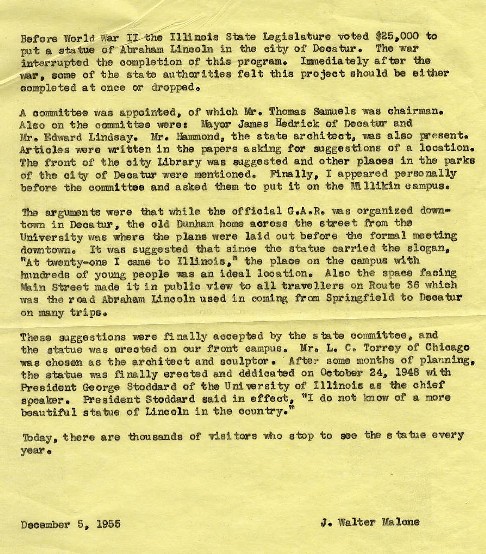
Letter of J. Walter Malone from his papers
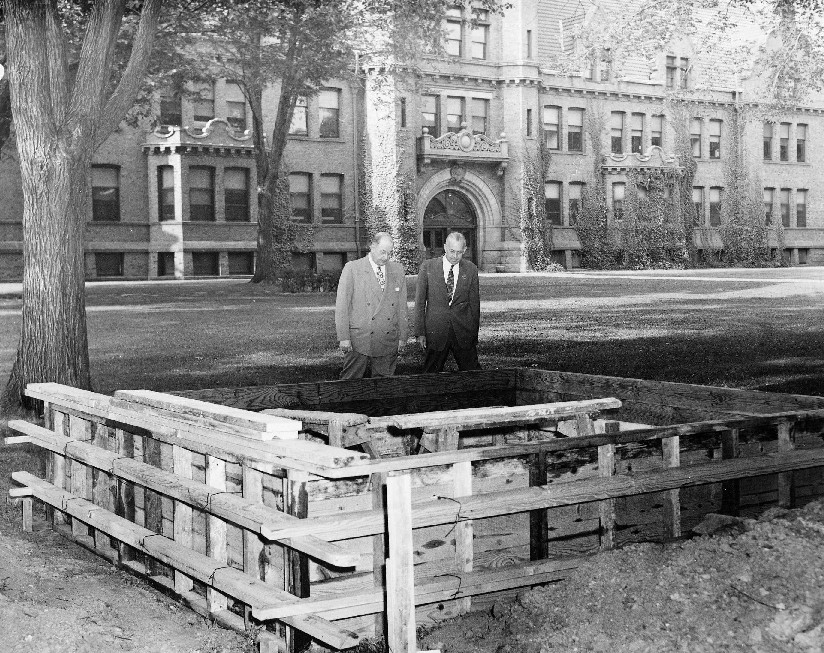
Mayor Hedrick and President Malone inspect the site preparations for the Lincoln Statue on Millikin's front campus
October 24, 1948 ~ Dedication of the Lincoln Statue

A Large crowd witnessed the unveiling of the statue on October 24, 1948
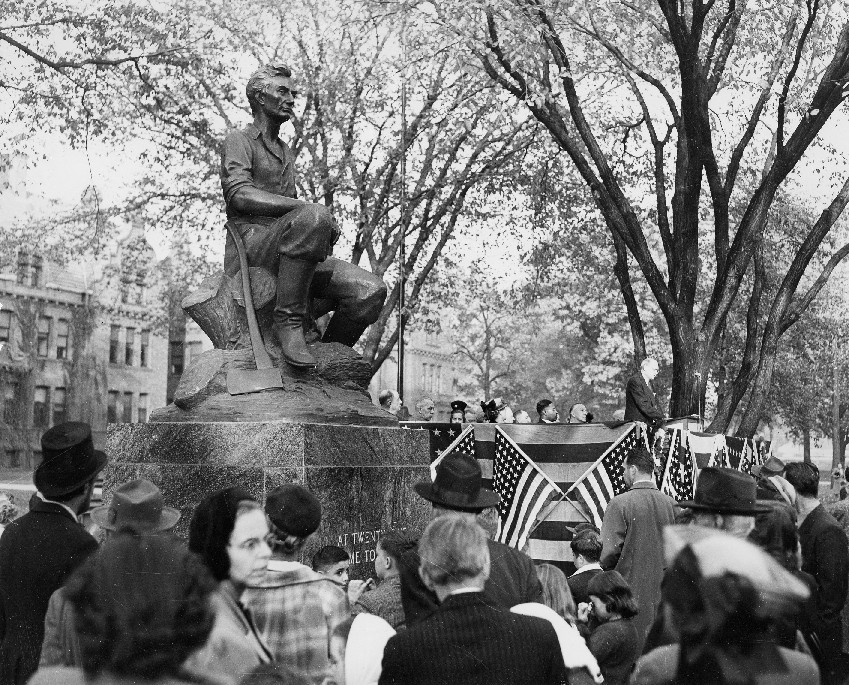
The completed Lincoln statue, weighing in at over 4000 pounds, arrived on campus in late September, and preliminary plans were made for a dedication ceremony to be held in mid-October, 1948.

The Decaturian 21 May 1948
 |  |
| The Decaturian 24 Sept 1948 p6 | The Decaturian 8 October 1948 p4 |
It was hoped that Governor Dwight Green would be the speaker at the ceremony, but he had a schedule conflict and could not attend. University of Illinois President George D. Stoddard was then selected to be the main speaker.
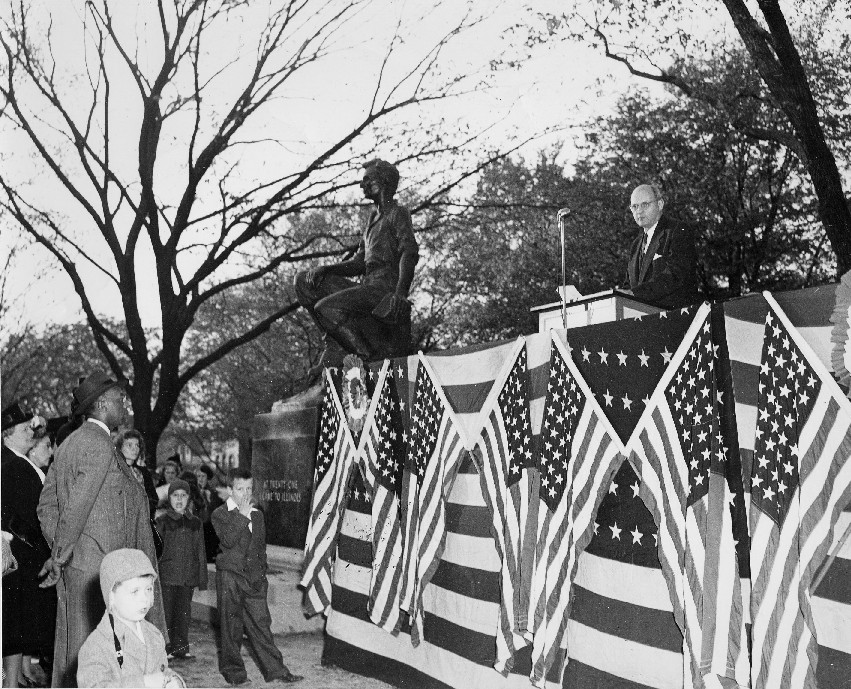
George D. Stoddard addresses the crowd on October 24, 1948

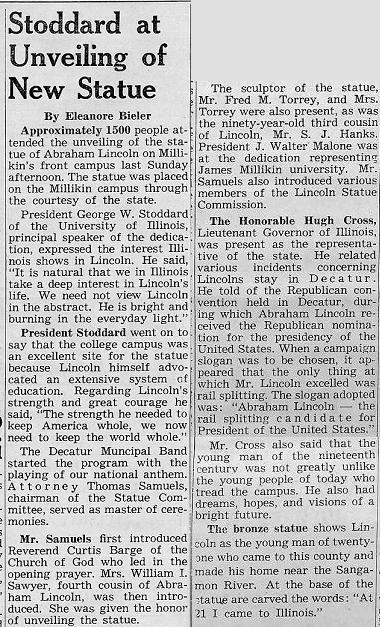
Above: The Decaturian 22 Oct 1948 p4 & The Decaturian 29 Oct 1948 p7
Past and Future Illinois Presidents
Although Illinois is the Land of Lincoln, he wasn't actually born in the state, but came to Illinois at the age of 21. Only one U.S. President was born in the Land of Lincoln, and he visited the Millikin campus on three occasions.
As a young man of only 18, Ronald Reagan came to Millikin in October of 1929 and suffered what he recalled as one of the worst beatings of his life. As a guard on the Eureka College football team, Reagan squared off with Millikin tackle George Musso, who would go on to be a Chicago Bears star and NFL Hall of Famer. President Ronald Reagan recounted the story when he came to Millikin in 1984, but on that occasion he did not get a chance to view the Lincoln statue.
Between those two visits, Ronald Reagan had another opportunity to visit Decatur and pause for a glimpse of the Lincoln statue on Millikin's campus. Touring GE plants in 1955 as part of his duties as host of television's General Electric Theater, Reagan made a stop in Decatur.

The Decaturian 21 October 1955 p3

Ronald Reagan views the statue in October 1955 (This Herald & Review photo was also used in the very first issue of the Millikin Quarterly after then President Reagan visited Millikin in 1984)
Taft, Torrey, and Millikin University
As stated above, Fred Torrey, the sculptor of the Lincoln Statue on Millikin's campus had been a student and associate of Lorado Taft. Taft himself had given a lecture just inside the building where Torrey's Lincoln statue now stands way back in 1910. According to Gladys E. Hamlin's book The Sculpture of Fred and Mabel Torrey (1969), the two models for the statue that were submitted and voted on at the Decatur Public Library were the last works that Torrey did in Taft's Midway Studios in Chicago. In 1958, ten years after the Lincoln statue arrived on campus, another visitor brought the connection full-circle.

1958 image of Senator Paul Douglas and wife Emily Taft Douglas viewing the statue
In the fall of 1958, US Senator Paul Douglas of Illinois visited Millikin's campus and spoke to students at their weekly chapel meeting.
Visiting campus with him was his wife, Emily Taft Douglas. Herself a former US Congresswoman, she was a distant cousin of President William H. Taft who had visited Millikin in 1911 (in fact had boarded a train right on West Main Street just feet from where the statue now stands). Emily Taft Douglas also just happened to be the daughter of Lorado Taft.
The Other Lincoln on Campus
Way back in 1909, Decatur and Millikin University combined to celebrate the centennial anniversary of the birth of Abraham Lincoln. On February 12, 1909, a large gathering met at Lincoln Square in downtown Decatur and then proceeded in parade down West Main Street to the University campus and inside the Assembly Hall (today's Albert Taylor Theatre) for a program in honor of the late President's 100th birthday.

Lincoln Birthday program as printed in 1909 Millidek yearbook Decaturian article March 1909 pages 17-18

The Decaturian March 1909 p 17 & 18
Leading the parade were a band followed by members of the Grand Army of the Republic (a fraternal organization of Civil War veterans of the Union Army that was founded in Decatur), Company H of the Illinois National Guard, and the Decatur Cadets. Once inside the Assembly Hall, the program included an introductory speech by William B. McKinley, a congressman from Illinois who also operated the Illinois Traction System railroad or "Interurban," whose trains stopped in front of Millikin on West Main Street every hour. Surprisingly, the main address was given by a southerner, Congressman William M. Howard of Georgia. An account of the proceedings appears above from the March 1909 Decaturian.

The Decaturian March 1909 page 18
Although the program called for the dedication of the Lincoln bust and tablet below, the Decaturian article reveals that it hadn't arrived in time for the February 12th ceremony and so it wasn't dedicated until the February 16th chapel exercises (formerly a weekly occurance at Millikin University).

From the 1909 Millidek yearbook
The bust resided in the main hallway of Liberal Arts Hall (now Shilling Hall) for many years, and itself was a campus icon. Although believed to still be on campus, the Archives is not sure where the Lincoln bust is located today.
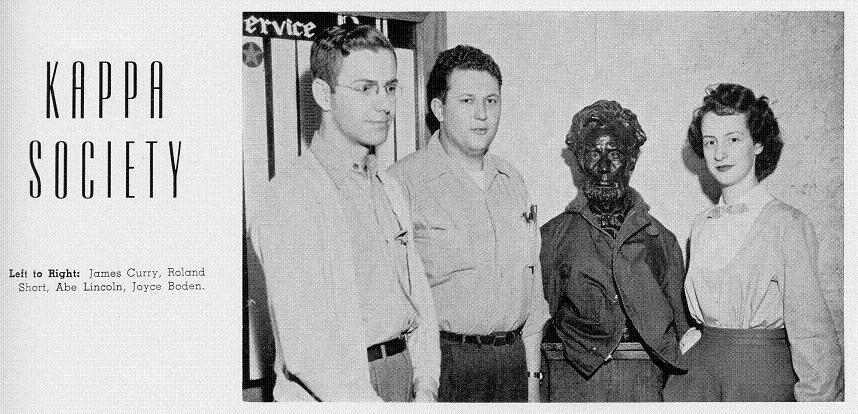
The Lincoln bust as member of the Kappa Society, from the 1949 Millidek yearbook
MIL-LINCOLN: Campus Icon
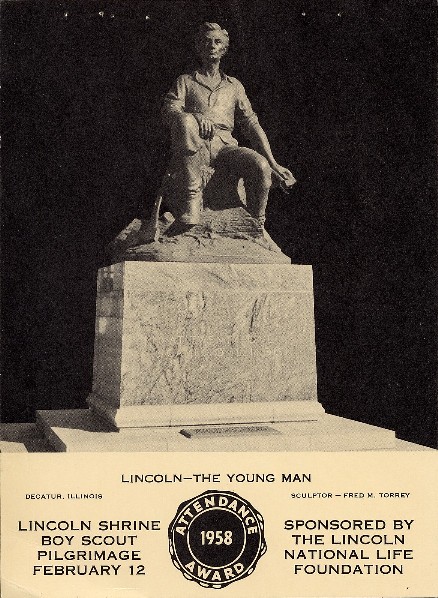
This Boy Scout attendance award reveals that the statue has a history of attracting visitors to campus
In the cold of winter…
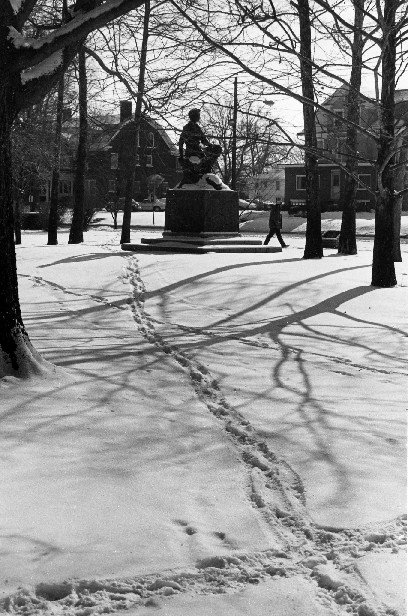
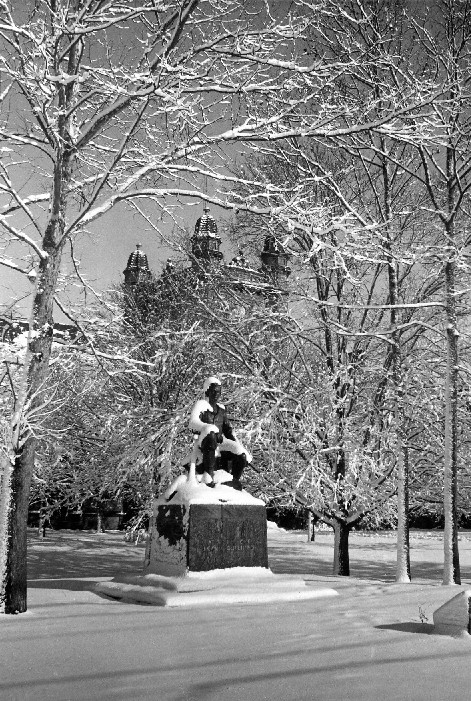
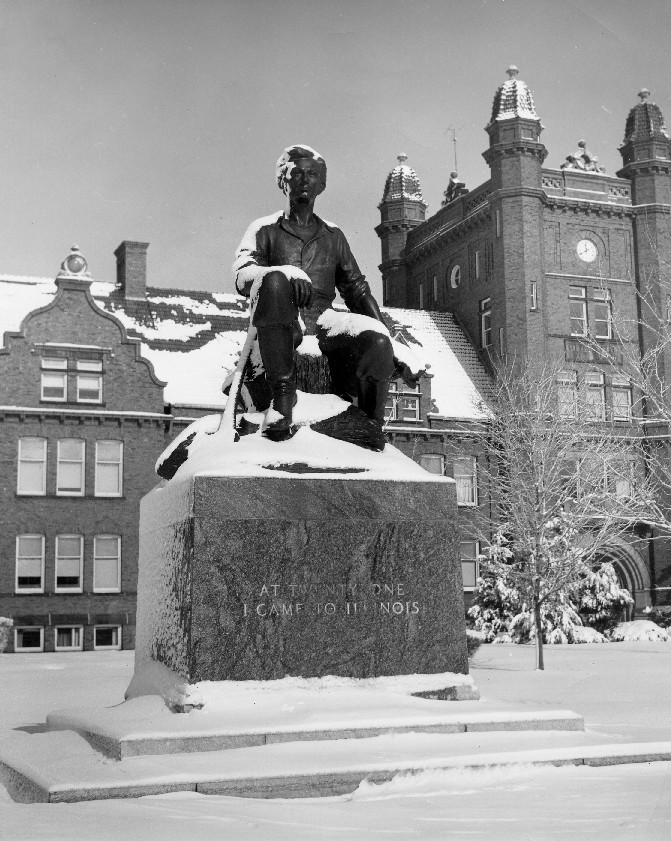




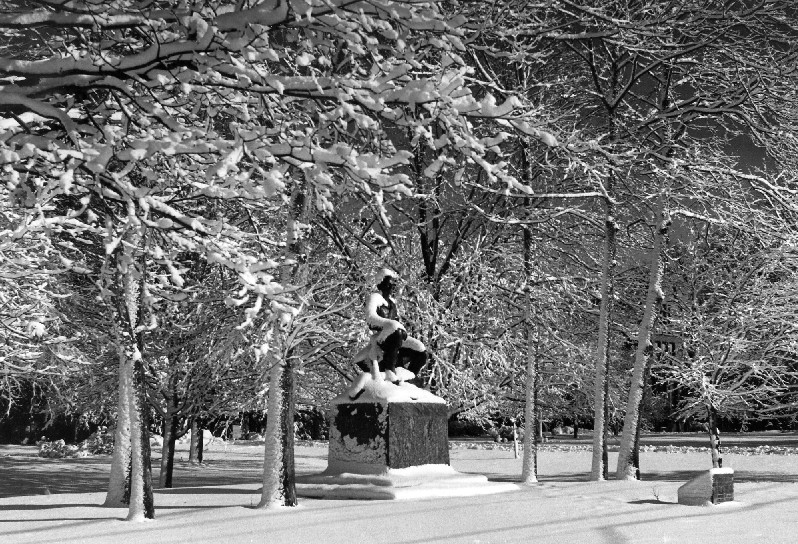


In the dark of night…
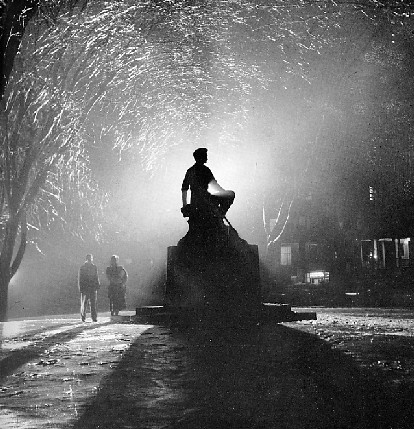
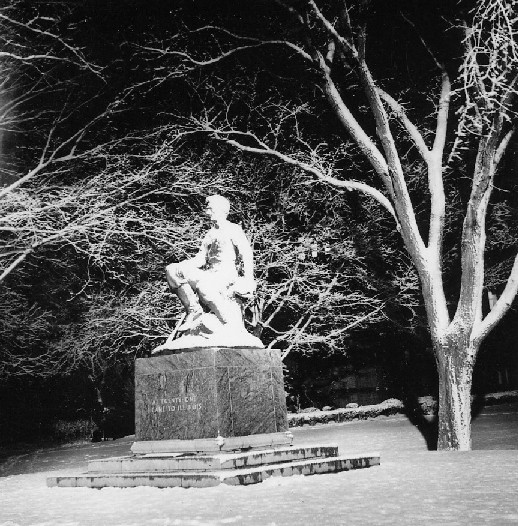

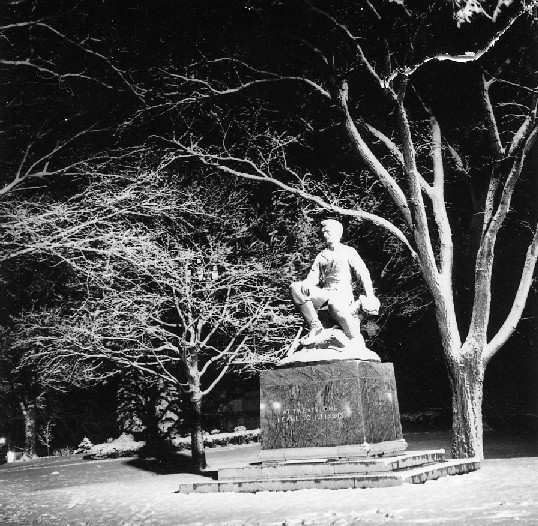
In light of day…
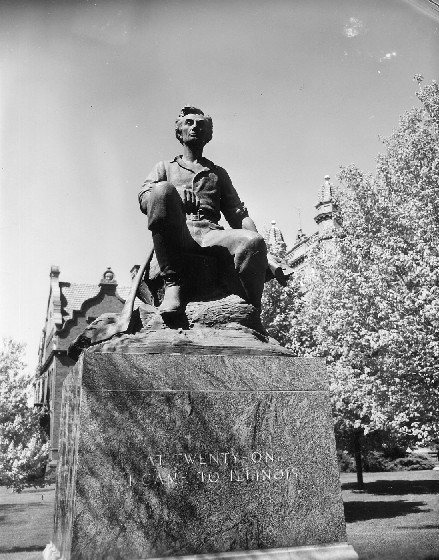

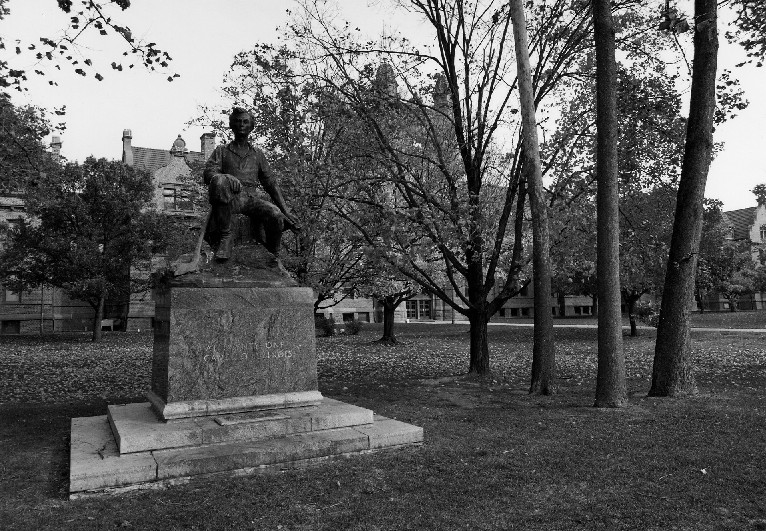

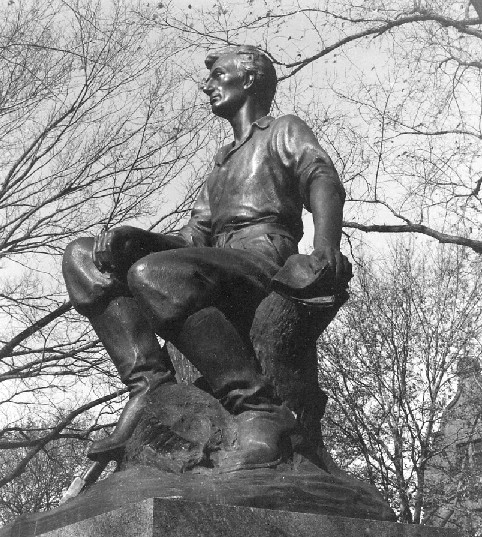
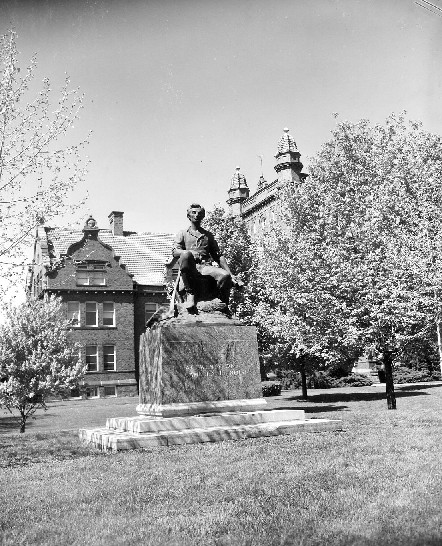

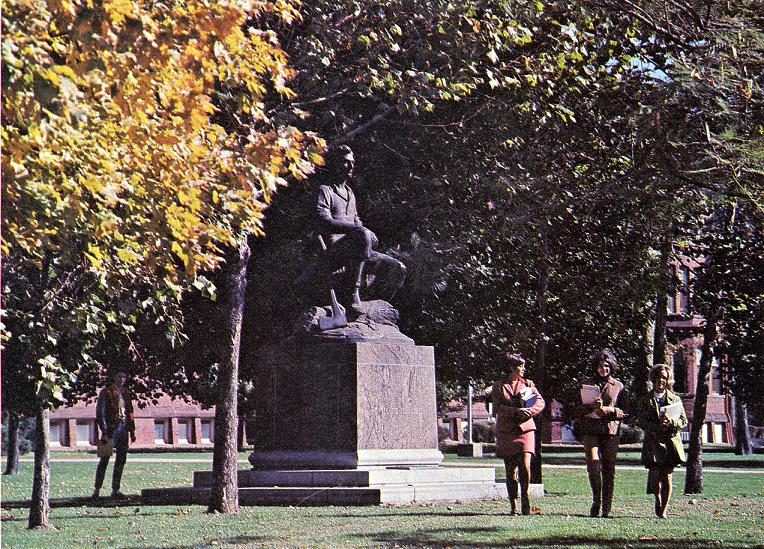
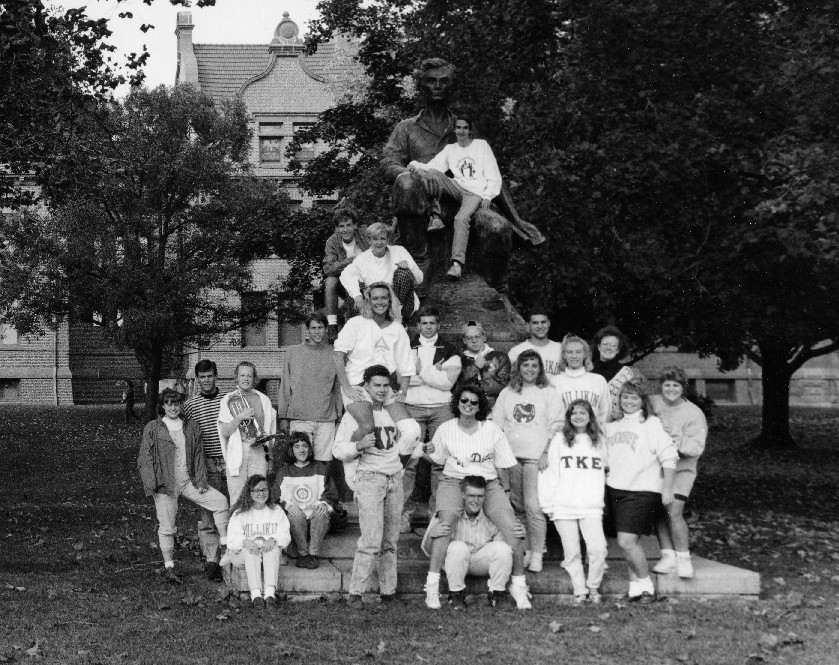
As cover art…
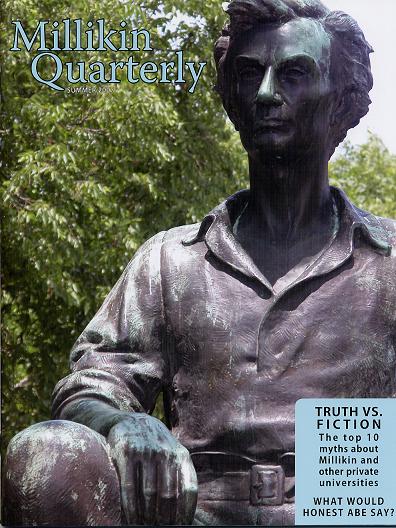
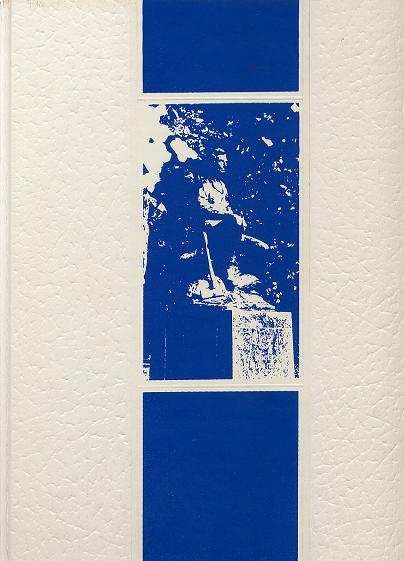
The Millikin Quarterly Summer 2007 issue cover & The Millidek Yearbook 1974 cover
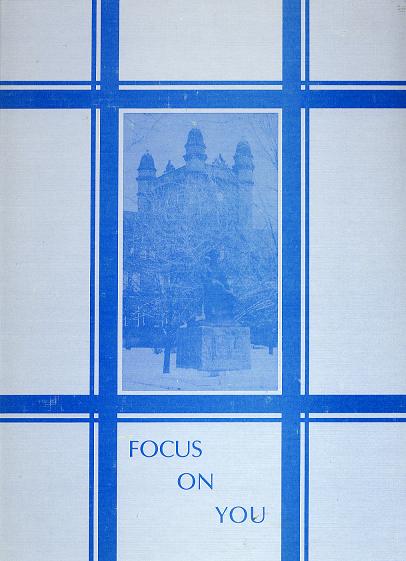

The Millidek Yearbook 1980 cover & The Millidek Yearbook 1992 cover
This Exhibit was researched and developed using source materials found within the Millikin University Archives & Special Collections.
This page created Feb 12, 2008 by Todd Rudat
Last Modified on Feb 18, 2008
Copyright: Millikin University Board of Trustees